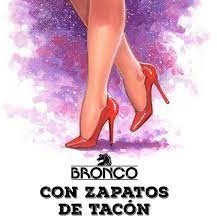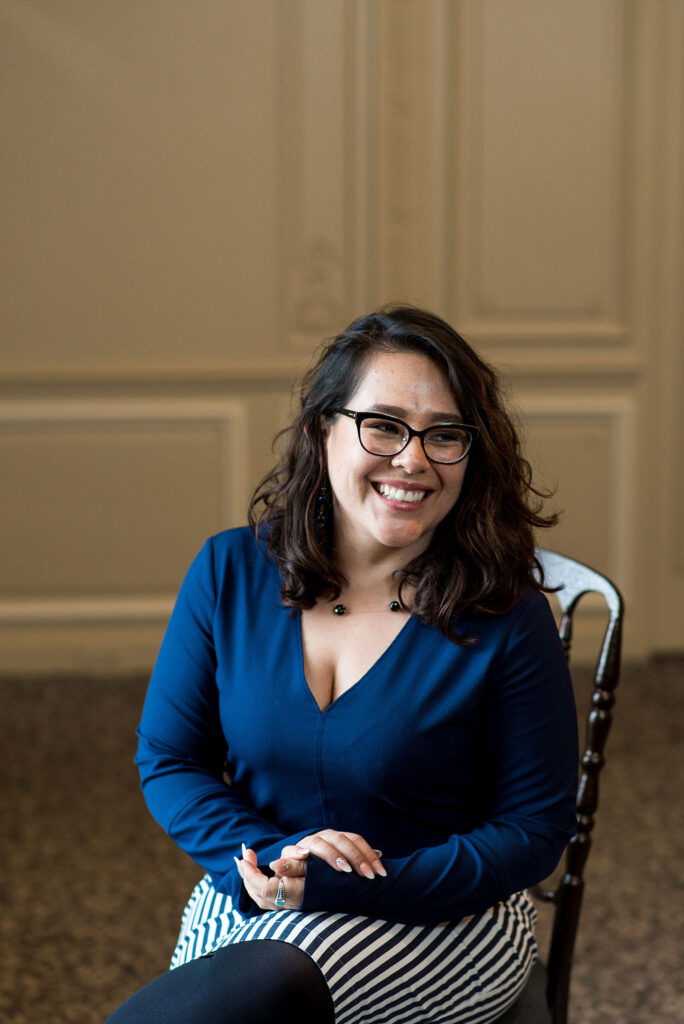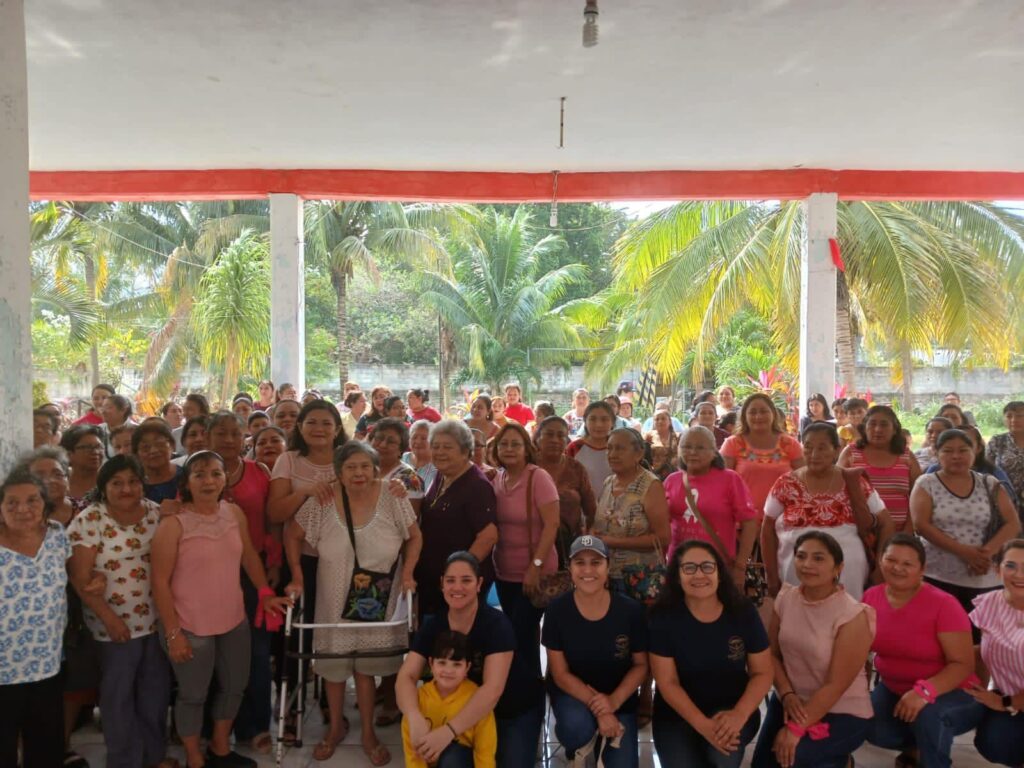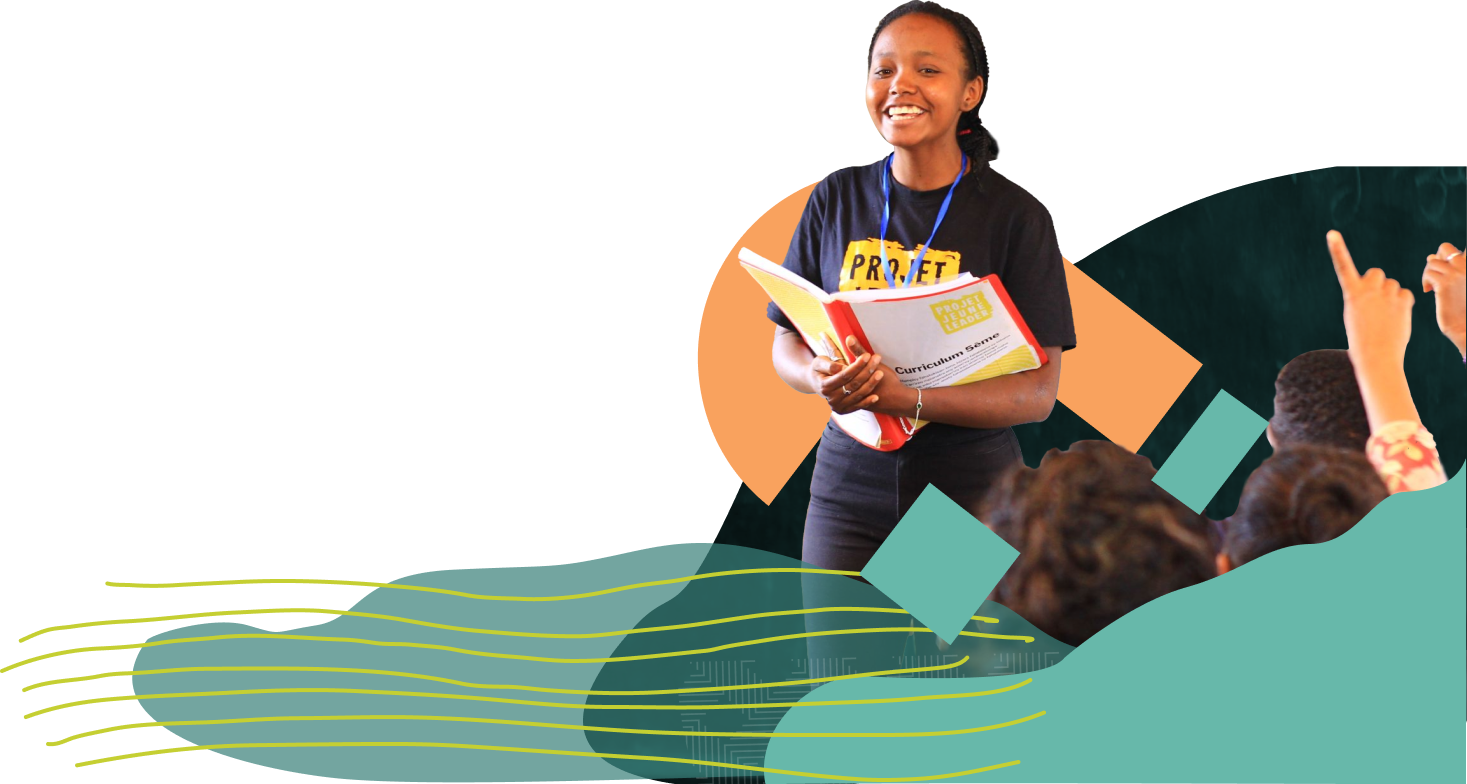Resignifying My Red Heels: Social Change Begins with Personal Transformation

The impact of the Partner Support Fund of WomenStrong International in my experience
I packed the suitcase with my mom and sister, because among the many things we do together, preparing for special events is among our favorites. The special event: the trip to Mexico to present, within the framework of the Latin American and Caribbean Conference of Social Sciences – CLACSO 2022, the product of the work carried out collaboratively with the colleague organization GENET in Malawi. This trip was possible through the WomenStrong International Partner Support Fund, which is intended to be invested in the areas of growth and development opportunities that each funded organization identifies, prioritizes and achieves. And what support!

Visionaria Perú, the organization that I lead, has been part of the WSI Learning Lab since 2019. We have received not only funding to implement the program “Walk the talk: teaching for gender equality in Peru” which is one of the three projects that we have in Cusco-Peru, but also (and above all) we have been greatly benefited from their Knowledge and Learning approach. This is their approach to the traditional “monitoring and evaluation”, prioritizing the trust placed in its partner organizations, such as Visionaria Peru and 18 other organizations in 15 countries worldwide. This trust is based on the recognition of our ability and experience to implement and track programs in the most efficient and suitable way to the reality of the women with whom we work, to our context and to the growth plans we have.
[…] when like-minded women-focused organizations come together to share with each other what works and what doesn’t, are given support to improve their organizational and technical capacity, and have opportunities to amplify their learnings with a wider community of organizations, they will improve their own practice and that of others.
WomenStrong International Theory of Change
And so, the possibility of presenting the product of our work on such an important platform (a leverage opportunity for Visionaria) became a reality through this trip to Mexico (a long-cherished dream of mine) and of course my sister and my Mom, my unwavering support system, would be present every step of the way.
In this article I share the experience of this trip, but more than emphasizing the travels, the enriching work sessions or even the picturesque and delicious Mexican culture, I emphasize the journey of questioning my own gender biases and understanding of my feminism.
“Con zapatos de tacón, las nenas se ven mejor que con zapatos de piso”1: packing clothes and ingrained stereotypes
Among selecting garments, trying them on, discarding or packing them, there was an item that I never hesitated to take with me: high heels. Their need was perceived from many perspectives, for example, for my youngest sister, a fan of fashion, high-heels add a chic touch to the wardrobe. For my mother, a woman of medium height, it’s about the elegance and impressiveness of the desired height provided by high-heels. And yet, beyond all taste and opinions, for me the real reason for packing high-heels at that moment is the deep belief that dictates that “as they see you, they treat you”. This was my understanding of the notion learned from an early age, that is that society differentiates the treatment provided (as well as opportunities, economic remuneration and in this specific case, recognition and professional validation) based on what is considered “appropriate, adequate, right,” including the way you dress.
I admit that I quite enjoy putting together a powerful outfit, those clothes with which I feel confident, secure and ready to take on the world. However, there is a subtle but valuable distinction between choosing what one wears for pleasure and choosing clothes based on social expectations that dictate whether you are worthy of respect, validation and approval. In short, beyond my appreciation for high-heeled shoes, I recognize their usefulness when the objective is to prove my worth, or at least that is how I learned to consider them, and that was the understanding I had at the time of starting this journey (to Mexico and the bounded inner-journey).
“To be liberated, woman must feel free to be herself”2: freeing myself from learned thoughts as a first step
On the morning of Wednesday, June 8, the day of our presentation, I put my high-heeled shoes in my bag and made my way in the sneakers I also brought with me. And luckily I did! Because I’m sure the 15-minute walk to the workroom would have taken twice as long if I’d walked in heels (as often happens to us women in education, economic growth, or career advancement, where ascents usually take twice as much time or effort[3]).
In addition to the presentation of Visionaria’s learning product, I was assigned by the organizers to facilitate the workspace, leaving time management for the presentations to me. Arriving at the workroom, my extraordinary travel companion Susan León, Development Coordinator at Visionaria Peru, made sure that our material was ready and impeccable, while I organized myself to fulfill the roles of the day. For the facilitator role, I had a proposal for the colleagues regarding time management: I would show them a green piece of paper when they had 5 minutes left, and a pink one when their time was up. I only realized I had been holding my high heels while explaining my method when a confused Monica, one of the fellow speakers, commented that she had thought I was going to talk about my red heels and ask about theirs. Horror! What’s “appropriate”, to my understanding, is to go to the bathroom unperceived, put on my shoes and only once they are on, would I be prepared to face the world and meet expectations. Have you ever purchased feminine pads in the neighborhood store and been offered them wrapped in a black bag to avoid the embarrassment of someone seeing them? In Bolivia, where I grew up, that was a very normalized practice: having to “hide” my intimate side, my feminine pads, my informal way of dressing, my small stature, my inability to wear high heels for more hours than are physically tolerable. From a young age I learned to avoid these “embarrassments.”
Standing in front of several women I was meeting for the first time and to whom, in my role as facilitator, I had to appear formal, serious and in control, I really felt horror! However, my embarrassment and discomfort were short-lived, because the burst of multiple laughter more than a judgment, it felt like an invitation to enjoy the moment in freedom, without expectations to be met. It was there and then that my biases were transformed, because that accessory that days before I had packed with the purpose of projecting that required formality, what was once an incentive for validation, now became a bridge to approach these women spontaneously, in a fun and authentic manner. My high-heeled shoes were an element to share my story, that of my mother and her teachings, that of my sister, that of many, many women in my life. They too, these women I was meeting for the first time, who also came to that space to present the product of their work and efforts, shared their own stories: one of them had never worn high-heels, another had a lot of skill for them. We shared and laughed, transferring warmth and security to what became a communal space. As Susan would say at the end of the day “I didn’t get nervous when presenting because I felt that we already knew each other, the space felt safe.”
We freely lived the experience and inhabited the space.

The Learning Lab at WomenStrong is a safe space where we, as organization and women leaders, are motivated to share what works, learn from each other, disseminate findings and learnings to enrich our efforts and strategies in the work we do to empower girls and women. I believe that the best way to close this article is precisely by responding to these important premises:
What worked? Question my own biases, especially those that have been reinforced by experience. I left home with the mandate to fulfill social expectations and instead I recovered my freedom to choose the value and the meaning I want to give to my high-heeled shoes.
What did we learn from each other? Among all the women present, with great enthusiasm we accompanied one of us on her first time wearing high-heeled shoes. And our presentation at CLACSO became much more than a work experience.
Learnings to share? Considering the work that women do is culturally, financially and socially mediated by obstacles and difficulties, the possibility of working in community with a support system like the one provided by WomenStrong International is most definitely a game changer that will mark the difference for feminist grassroots organizations in the global south.

About the Author

Paola Saldivias Mendez participated together with Susan León López in worktable 209, correspondent to the scope of the Right to Education, Public Policies and Pedagogical Alternatives. Professionalized in social communications, she co-founded Visionaria Perú after several years of collaboration with Visionaria Network. She is currently the Gender Specialist Coordinator at Visionaria and manages the training program “Walk the talk: Educating for gender equality in Peru.”
—
1Title of a Mexican cumbia song that translates to “Women look better wearing heels than flats” written by Paniagua, C. (1991). Con zapatos de tacón [Canción]. En Salvaje y Tierno. Fonovisa. “Los Bronco” is a Mexican northern cumbia music band and I have known the song “Con zapatos de tacón” for many years, revisiting it in this process of questioning and feminist personal deconstruction.
2 Gandhi, Indira (1980) in her speech “True Liberation Of Women”: “To be liberated, woman must feel free to be herself, not in rivalry to man but in the context of her own capacity and her personality.”
3 Ying, W (2016). “El ascenso laboral, una carrera de fondo para la mujer” en https://www.elmundo.es/economia/2016/04/20/571121bce5fdea09508b46b9.html. El Mundo. Madrid




